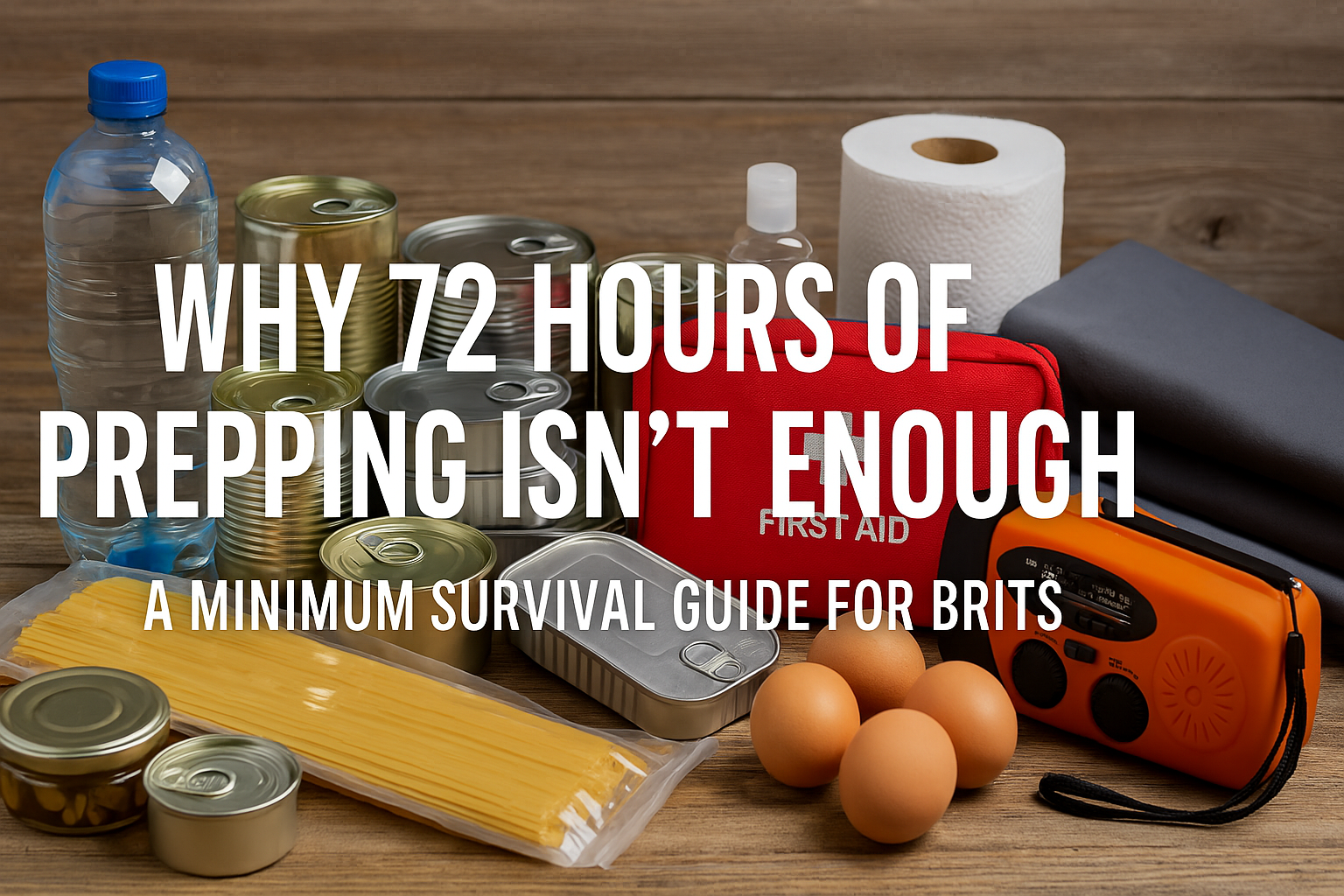As we step into 2024, the shadow of rising food prices looms large, particularly in the realms of beef and pork. This surge is not just a blip on the economic radar but a trend that’s been building, influenced by a complex web of factors from climate to consumer behavior. In this exploration, we delve into the dynamics shaping the beef and pork markets and offer insights into navigating these turbulent waters.
The State of Food Prices in 2024
Food prices are undergoing significant shifts, reflecting a complex interplay of factors that have both immediate and long-term implications for consumers and the broader economy. After years of heightened volatility, marked by the pandemic’s far-reaching impacts, there’s a cautious optimism that food price inflation might be returning to more historical norms.
The latest Food Price Outlook by the USDA’s Economic Research Service (ERS) suggests a nuanced picture: while supermarket prices are projected to decline slightly by about 0.6%, the cost of dining out is expected to rise by 4.9%. This divergence underscores the different pressures facing the food-at-home versus food-away-from-home sectors, with the latter still grappling with the high costs of labor, which are “baked into” the prices we see on menus.
Energy and agricultural commodity prices, significant drivers of food inflation, are showing signs of easing. Ricky Volpe, an associate professor at California Polytechnic State University, highlights that these inflationary pressures are softening, offering a glimmer of hope for consumers. However, the food sector continues to confront challenges, including historic shortages and bottlenecks in transportation, particularly in refrigerated trucking, alongside persistent labor shortages across the supply chain.
Thomas Bailey, Rabobank’s senior analyst for consumer foods, points out that while acute inflation driven by factors like weather, energy, feed, input costs, and fertilizer prices softened in 2023 and is expected to continue this trend into 2024, there are structural challenges that prevent a significant moderation in food prices. Among these is “green inflation,” where efforts towards sustainability and investments in sustainable farming practices add to the cost pressures. Additionally, the geopolitical environment poses another layer of complexity, affecting trade flows and the previously enjoyed “freedom of movement” that helped keep prices low.
Interest rates, remaining relatively high, add another dimension to the cost structure that food companies must navigate. Roger Cryan, the chief economist at the American Farm Bureau Federation, anticipates that overall food inflation, including the cost of eating out, will align with general inflation at about 2–3%. This alignment suggests a stabilization in food prices, yet with nuances that reflect the broader economic and sector-specific challenges.
In the context of specific food categories, eggs have seen a dramatic rollercoaster, with prices skyrocketing due to the impact of highly pathogenic avian influenza before finally stabilizing towards the end of 2023. The USDA projects a further drop in farm-level egg prices by 5.4% in 2024, indicating a potential easing in this segment.
Dairy and meat sectors also present a mixed bag. Milk prices might see a modest increase or even a slight decline, reflecting the global market’s transition to the next phase of the cycle, with dairy demand being a critical factor to watch. Beef prices, on the other hand, continue to lead the meat sector in terms of price increases, although the gap between beef, pork, and broiler prices has narrowed since the pandemic’s onset.
As we look towards the remainder of 2024, the food price landscape is shaped by a confluence of easing inflationary pressures, structural challenges, and sector-specific dynamics. While there’s cautious optimism for moderation, the reality is nuanced, reflecting the ongoing adjustments in the post-pandemic world and the broader economic environment.
The Beef Price Conundrum
In 2024, the beef market is navigating through a labyrinth of challenges and opportunities, with prices at the heart of the discourse. The dynamics of the beef industry are influenced by a myriad of factors, from herd sizes to consumer preferences, each playing a pivotal role in shaping the market landscape.
Shrinking Herd Sizes and Rising Prices
The U.S. cattle population has been on a downward trajectory, reaching its lowest point since 2015. This decline is not merely a statistical blip but a trend with significant implications for the beef market. The smaller breeding herd signals a continuation of this trend into 2024, potentially hitting a 60-year low. With animals harvested for meat down by 4% from the previous year and expected to decline further, the supply side of the equation is tightening.
This reduction in supply is already making its mark on wholesale beef prices, which have soared to record highs — above $300/cwt for much of 2023. This surge is attributed to lower meat production, driven by the reduced herd sizes. Retail beef prices, following suit, are setting records, prompting some consumers to pivot towards lower-cost alternatives like pork and chicken.
The California Effect
A significant wildcard in the beef price equation is California’s animal welfare rule, Proposition 12, which mandates increased space for pig-rearing but also indirectly affects the beef market. This legislation could depress pork prices in other states, creating a ripple effect across the meat industry. The potential for increased pork supplies in states outside California could, paradoxically, influence beef market dynamics, highlighting the interconnectedness of the meat industry.
Market Adaptations and Consumer Choices
In the face of rising meat prices, particularly beef, both the market and consumers are adapting in nuanced ways as we move through 2024. The meat department, a significant contributor to grocery sales, is witnessing shifts that underscore evolving consumer preferences and strategic industry responses.
Adapting to Inflationary Pressures
The meat industry is navigating through a period marked by inflationary pressures, with the Consumer Packaged Goods (CPG) prices seeing an average increase. Interestingly, the meat department’s price increase has been relatively moderate, suggesting a strategic pricing approach to maintain consumer loyalty and manage demand. This moderation in price adjustments reflects a broader trend of brands seeking growth opportunities by aligning their strategies with consumer expectations and market realities.
Shifting Consumer Preferences
Consumer behavior in 2024 is deeply influenced by the ongoing impact of inflation, yet price is not the sole driver of purchasing decisions. There’s a growing emphasis on value, quality, and sustainability, factors that are increasingly guiding consumer choices in the meat aisle. This shift is part of a larger trend where consumers, faced with financial constraints, are becoming more discerning, seeking products that not only fit their budget but also align with their lifestyle and ethical considerations.
The Plant-Based Meat Dilemma
One of the notable trends in the meat department is the flagging demand for plant-based meats. After years of rapid growth, the plant-based sector is facing a plateau, if not a decline, in consumer interest. This shift could be attributed to a variety of factors, including taste preferences, price points, and a deeper understanding of these products’ nutritional profiles. The initial surge in plant-based meat consumption highlighted a significant interest in alternative proteins, but as the market matures, consumers are weighing these options more critically against traditional meat products.
Strategic Brand Responses
Brands are responding to these market dynamics by diversifying their product offerings and emphasizing attributes that resonate with today’s consumers. This includes a focus on premiumization, where higher quality and ethically sourced meats are highlighted, catering to a segment of consumers willing to pay a premium for products that meet their standards for taste, health, and sustainability. Additionally, transparency in sourcing and production processes is becoming a key differentiator, as consumers increasingly demand to know the origin and ethical credentials of the meat they consume.
Beef, Looking Ahead
As we move further into 2024, the beef industry stands at a critical juncture. With herd sizes diminishing and prices climbing, the market is in a state of flux. The impact of external factors, such as California’s Proposition 12, adds another layer of complexity to the market’s future trajectory.
The beef price conundrum of 2024 is a multifaceted challenge, encompassing supply constraints, legislative impacts, and consumer behavior shifts. As the industry navigates these waters, the balance between maintaining supply levels and meeting consumer demand will be crucial. The coming months will be telling, as stakeholders across the spectrum adjust to the evolving market landscape, shaping the future of the beef industry in the process.
Retailers, in response, are revisiting pre-pandemic strategies, leveraging promotions and discounts to entice consumers. The emphasis is on value, not just in terms of price but in the quality and experience of the meal. This approach reflects a broader consumer trend of recreating restaurant-quality meals at home, a habit formed during the pandemic and persisting into 2024.
Pork Prices and Market Dynamics
As we delve into 2024, the dynamics of the pork market are increasingly influenced by a complex interplay of global economic recovery, consumer spending habits, and evolving agricultural practices. The pork industry, while distinct from beef in several aspects, faces its own set of challenges and opportunities in the current economic climate.
Global Economic Recovery and Consumer Spending
The slow global economic recovery post-COVID-19 pandemic continues to shape consumer behavior, particularly in terms of meat consumption. Financial constraints and heightened consumer caution have led to a more pronounced scrutiny of spending, especially on food items perceived as non-essential or luxury, such as certain cuts of pork. This cautious approach is likely to dampen demand for more expensive pork products, as households prioritize budget-friendly options and value-for-money purchases.
In regions like Asia, particularly China, the economic rebound has not been as robust as anticipated, affecting consumer confidence and spending power. This scenario has prompted a shift towards more affordable meat options, impacting the demand for imported pork, which often comes at a premium. As a result, there’s a growing preference for domestically produced or less expensive imports from countries with lower production costs.
Market Adaptations to Consumer Preferences
In response to these economic and consumer behavior trends, pork producers and retailers are adapting their strategies. There’s an increased focus on offering a range of products that cater to varying consumer price sensitivities, including introducing more budget-friendly pork cuts and processed products. Additionally, marketing efforts are being recalibrated to highlight the value proposition of pork as a cost-effective protein source, aiming to maintain its appeal among price-conscious consumers.
Supply Chain Adjustments
The pork industry’s supply chain is also undergoing adjustments to align with the current market dynamics. Producers are closely monitoring herd sizes and production levels to avoid oversupply, which could further depress prices. At the same time, there’s a concerted effort to enhance efficiency and reduce production costs, enabling producers to offer competitive pricing without compromising on quality.
Pork, Looking Ahead
As we look towards the latter half of 2024 and beyond, the pork market is expected to navigate through these challenges with a degree of resilience. The industry’s ability to adapt to changing consumer preferences, coupled with strategic supply chain management, will be crucial in maintaining pork’s position in the global meat market. While economic uncertainties persist, the pork sector’s flexibility and innovation are likely to support its recovery and growth in the face of shifting consumer demands and global market pressures.
In conclusion, the dynamics of pork prices and market trends in 2024 reflect a broader narrative of adaptation and resilience in the face of economic challenges. As consumer behavior continues to evolve, the pork industry’s response will be instrumental in shaping its future trajectory.
Consumer Behavior and Market Trends
In 2024, the landscape of consumer behavior and market trends in the food industry, particularly within the meat sector, continues to evolve under the influence of several key factors. These include ongoing economic uncertainties, a heightened awareness of health and sustainability issues, and the integration of technology in shopping habits.
Economic Uncertainties and Budget-Conscious Consumers
The economic fallout from the pandemic years has had a lasting impact on consumer behavior, with many individuals becoming more budget-conscious. This shift has led to a more careful consideration of purchases, especially when it comes to food. Consumers are increasingly looking for value in their purchases, balancing quality with cost. This trend has seen a rise in the popularity of budget-friendly cuts of meat, as well as an increase in the consumption of plant-based proteins as economical alternatives to traditional meat products.
Health and Sustainability Concerns
Health and sustainability have become significant drivers of consumer behavior. There is a growing segment of the population that is not only interested in the nutritional content of their food but also in its environmental footprint. This dual concern has fueled the demand for organic, locally sourced, and ethically produced meat products. Moreover, the interest in plant-based diets continues to grow, not just for health reasons but also as a response to concerns about animal welfare and environmental sustainability.
Technological Integration and Online Shopping
The integration of technology into everyday life has transformed shopping habits, with more consumers turning to online platforms for their grocery shopping. This shift has been accelerated by the pandemic but continues to persist due to the convenience and efficiency it offers. Online shopping platforms and apps are increasingly offering personalized shopping experiences, with recommendations based on previous purchases and browsing habits. This digital transformation is also enabling consumers to easily compare prices and products, further influencing their purchasing decisions.
As we move further into 2024, these trends in consumer behavior and market dynamics are expected to deepen. The food industry, particularly the meat sector, will need to continue adapting to these changes. This could involve embracing more sustainable practices, expanding online offerings, and catering to the health-conscious consumer. The ability to anticipate and respond to these evolving consumer preferences will be key to success in the increasingly competitive food market.
Consumer behavior and market trends in 2024 are characterized by a complex interplay of economic, environmental, and technological factors. Understanding these trends is crucial for businesses looking to navigate the challenges and opportunities of the current market landscape.
Shielding Yourself from Rising Costs and Market Volatility
In the face of rising food costs and market volatility, particularly within the meat sector, preppers—those dedicated to preparing for various types of emergencies, including economic downturns—face unique challenges. However, with strategic planning and adaptive strategies, preppers can effectively mitigate these challenges, ensuring their families remain well-fed and financially stable. Here’s a comprehensive guide on how preppers can shield themselves from the impacts of rising costs and market fluctuations.
Diversifying Food Sources
Home Gardening and Permaculture: A High-level Overview
where self-sufficiency is paramount, home gardening and permaculture stand out as essential strategies for ensuring food security amidst rising costs and market volatility. These practices not only offer a way to produce fresh, nutritious food but also embody a sustainable approach to living that can mitigate the impact of economic fluctuations.
Home Gardening: Cultivating Resilience
Home gardening is more than just a hobby; it’s a practical response to the unpredictability of food prices. By growing vegetables, fruits, and herbs, preppers can significantly reduce their reliance on commercial food sources. Starting a home garden requires some basic considerations:
- Soil Quality and Preparation: Healthy soil is the foundation of a productive garden. Incorporating organic matter, such as compost or manure, can improve soil fertility and structure, enhancing plant growth.
- Water Management: Efficient water use through drip irrigation or rainwater harvesting systems can ensure plants receive adequate moisture without wastage, crucial in areas with water scarcity.
- Crop Selection: Choosing crops that are well-suited to the local climate and soil conditions is vital. Incorporating heirloom varieties can offer resilience to pests and diseases, while also preserving biodiversity.
- Succession Planting: Planting crops in succession, rather than all at once, can extend the harvest period, ensuring a continuous supply of fresh produce.
Permaculture: Embracing Ecosystem Harmony
Permaculture goes beyond traditional gardening by creating integrated systems that mimic the efficiency and resilience of natural ecosystems. It involves designing landscapes that combine food production, water management, and energy conservation in a self-sustaining cycle. Key principles include:
- Observation and Design: Understanding the natural flow of the land and designing the garden layout to optimize sun exposure, drainage, and wind protection.
- Polyculture and Biodiversity: Growing a variety of plants together mimics natural ecosystems, promoting a healthy balance that can reduce pest outbreaks and improve soil health.
- Companion Planting: Certain plant combinations can benefit each other by deterring pests, improving soil fertility, or providing shade and support.
- Natural Resources Utilization: Maximizing the use of on-site resources, such as composting organic waste for fertilizer or using natural materials for garden structures, reduces dependency on external inputs.
Integrating home gardening with permaculture principles, preppers can create robust food systems that are less susceptible to external shocks. This approach not only provides a direct source of food but also contributes to the health of the local environment, creating a sustainable model for living that can withstand the challenges of rising costs and market volatility.
Livestock Rearing: Enhancing Self-Sufficiency
For preppers aiming to bolster their food security against the backdrop of rising costs and market fluctuations, livestock rearing emerges as a pivotal strategy. This practice not only diversifies food sources but also contributes to a self-sufficient lifestyle, providing meat, eggs, and dairy while also enriching agricultural ecosystems.
Choosing the Right Livestock
The selection of livestock is a critical first step, influenced by factors such as available space, local climate, and personal dietary preferences. Small-scale livestock, such as chickens for eggs and meat, rabbits for high-protein meat, and goats for milk (and potentially meat), are particularly suited to prepper homesteads. These animals require relatively modest space and can adapt to a variety of environments.
- Chickens are a popular choice due to their dual-purpose nature, providing both eggs and meat. They can be relatively easy to care for, requiring basic shelter, regular feeding, and protection from predators.
- Rabbits offer a highly efficient meat source, breeding rapidly and converting feed into meat more efficiently than many other animals. They require minimal space and can be raised in hutches.
- Goats can provide milk, cheese, and meat, making them a versatile addition. They require good fencing to contain and can help manage weeds and brush, reducing the need for manual land clearing.
Sustainable Practices in Livestock Rearing
Sustainable livestock management practices are essential for maintaining the health of the animals and the environment. This includes:
- Pasture Management: Rotational grazing practices can prevent overgrazing, preserve soil health, and reduce the risk of parasites and diseases.
- Feed and Nutrition: Providing a balanced diet tailored to the specific needs of each type of livestock is crucial for their health and productivity. Integrating feed production into the homestead, such as growing fodder or utilizing kitchen scraps, can reduce reliance on commercial feeds.
- Health and Welfare: Regular health checks, vaccinations, and prompt treatment of illnesses are vital. Natural remedies and preventive care can minimize the need for antibiotics and other medications.
Integration with Your Homestead Ecosystems
Livestock can play an integral role in a homestead’s ecosystem, contributing to a closed-loop system of sustainability. Their manure is a valuable resource for composting, enhancing soil fertility for the garden. Chickens can aid in pest control by consuming insects, while goats can clear vegetation, providing natural land management.
Incorporating livestock rearing into prepping strategies not only secures a direct source of nutritious food but also promotes a holistic approach to self-sufficiency. By carefully selecting and sustainably managing livestock, preppers can create resilient food systems capable of withstanding economic pressures and environmental challenges.
Strategic Food Storage and Preservation
Canning and Dehydration: Preserving the Bounty
In the quest for self-sufficiency and preparedness, canning and dehydration stand out as essential techniques for preserving food. These methods not only extend the shelf life of produce and meats but also ensure that preppers have access to a diverse and nutritious food supply throughout the year, regardless of market fluctuations or seasonal scarcities.
Canning: A Time-Honored Tradition
Canning is a method of food preservation that involves processing food in airtight containers to extend its shelf life. This technique can be divided into two main categories: water bath canning and pressure canning.
Water Bath Canning is suitable for high-acid foods like fruits, tomatoes, pickles, and jams. The acidity prevents the growth of harmful bacteria, making it safe to process these foods in a boiling water bath.
Pressure Canning is necessary for low-acid foods such as vegetables, meats, and poultry. These items require higher temperatures to safely preserve, achievable only through pressure canning.
Canning allows preppers to store a wide variety of foods, from garden produce to homemade soups and sauces. It’s a sustainable way to manage surplus harvests and ensure a supply of comfort foods and nutritional diversity during leaner times.
Dehydration: Efficiency and Versatility
Dehydration, the process of removing moisture from food, is another invaluable preservation method. By drying fruits, vegetables, herbs, and meats, preppers can significantly reduce food volume and weight, making storage easier and more space-efficient.
- Fruits and Vegetables: Dehydrated fruits and vegetables retain most of their nutritional value and can be rehydrated for cooking or enjoyed as snacks.
- Meats: Jerky, made by dehydrating lean meat, is a protein-rich food that’s both portable and long-lasting, ideal for emergency food supplies or nutritious snacking.
Dehydration can be achieved through various means, including air drying, sun drying, oven drying, or using a dedicated food dehydrator. Each method has its advantages, with food dehydrators offering the most control over temperature and airflow, ensuring consistent and safe results.
Integrating Canning and Dehydration into Prepping
Mastering canning and dehydration means more than just food preservation; it’s about food security, independence from commercial food systems, and the ability to provide for one’s family in uncertain times. These methods complement other prepping strategies, such as gardening and livestock rearing, creating a comprehensive approach to self-reliance.
By incorporating canning and dehydration into their repertoire, preppers can maximize the utility of their harvests and hunts, reduce waste, and enjoy the peace of mind that comes with a well-stocked pantry. These preservation techniques, rooted in tradition yet adaptable to modern needs, are key components of a resilient prepping strategy.
We have by no means perfected the canning process. But there is nothing more satisfying than opening a jar of salsa, pickles, jam, or other preserved food a year later, knowing it likely cost next to nothing because it came out of the garden…
Freezing: Still a Staple in Food Preservation
Freezing still stands as a cornerstone of modern food preservation techniques, especially valuable for preppers aiming to maintain a sustainable and versatile food supply. This method halts the activity of microorganisms and enzymes that cause food spoilage and nutrient loss, effectively extending the shelf life of a wide array of foods from fresh produce to cooked dishes and raw meats.
The Advantages of Freezing
Versatility and Nutritional Integrity: Freezing applies to almost all food types, including fruits, vegetables, meats, dairy products like milk and cheese, and prepared meals. It preserves the nutritional value, texture, and flavor of foods much closer to their fresh state compared to other preservation methods.
- Convenience and Accessibility: Frozen foods are ready to use with minimal preparation, making them incredibly convenient. For preppers, this means being able to quickly access a variety of foods to diversify meals and ensure nutritional needs are met, even under restricted conditions.
- Seasonal Harvests and Bulk Purchases: Freezing enables preppers to take full advantage of seasonal harvests, sales, and bulk purchases. By freezing surplus produce or meats obtained at peak season or at a discount, preppers can enjoy cost savings and a steady supply of food throughout the year.
Implementing an Effective Freezing Strategy
Proper Packaging: To maximize the benefits of freezing, it’s crucial to use the right packaging materials designed to withstand cold temperatures while preventing freezer burn and flavor transfer. Vacuum-sealing bags, heavy-duty freezer bags, and airtight containers are ideal choices.
- Organization and Rotation: Keeping the freezer organized with a system for rotating older items to the front ensures that nothing is forgotten or wasted. Labeling packages with contents and freezing dates helps manage the inventory efficiently.
- Energy Efficiency: Investing in a high-quality, energy-efficient deep freezer can reduce electricity costs in the long run. Placing the freezer in a cool, dry location and ensuring it remains at least three-quarters full for optimal energy use are practical tips for maintaining efficiency.
Safety Considerations: It’s important to follow safe thawing practices to prevent bacterial growth. Planning ahead to thaw foods in the refrigerator or using the microwave’s defrost setting are safe methods. Additionally, understanding the optimal freezing times for different foods can help maintain quality and safety.
Freezing is more than just a method of food preservation; it’s a strategic approach to building a resilient and flexible food supply. By leveraging the benefits of freezing, preppers can ensure that their families have access to a wide variety of nutritious foods, regardless of external circumstances, making it an indispensable tool in the pursuit of preparedness and self-sufficiency.
At some point, when we can afford to spend the money (and make the room) we will invest in a Harvest Right Freeze Dryer to elevate our preparedness experience.
Financial Strategies for Market Volatility
- Bulk Purchasing and Cooperative Buying: Buying in bulk, especially for non-perishable items, can lock in lower prices. Joining or forming buying cooperatives can also leverage collective purchasing power, securing lower prices for group members on everything from grains to meat.
- Alternative Investments: Diversifying financial investments beyond traditional stocks and savings accounts can provide a buffer against economic downturns. Investing in tangible assets like precious metals, or even in agricultural commodities, can offer a hedge against inflation.
Skill Development and Community Networking
Mastering Preservation and Foraging: Essential Skills for the Prepared
In the journey towards self-reliance and preparedness, learning food preservation and foraging skills are invaluable. These practices not only enhance food security but also connect individuals more deeply with their environment and the natural cycles of abundance. For preppers, these skills are not just hobbies; they are critical components of a comprehensive strategy to ensure sustainability and resilience in the face of uncertainties.
The Art of Food Preservation
Food preservation is an ancient art that has evolved over centuries, enabling humans to store surplus food for leaner times. Today, it encompasses a range of techniques from canning, dehydration, and freezing to more traditional methods like fermenting and smoking. Each method has its unique benefits and applications, making them suitable for different types of foods and purposes. As mentioned earlier:
- Canning allows for the long-term storage of a wide variety of foods, including fruits, vegetables, meats, and prepared dishes. Learning to can safely, understanding the difference between water bath and pressure canning, and knowing the acidity levels required for preservation are crucial.
- Dehydration is a simple, energy-efficient way to preserve foods. It concentrates flavors and reduces storage space needs. Mastering dehydration involves understanding optimal drying temperatures and times to preserve the nutritional content and prevent spoilage.
- Fermentation, new to the discussion points, not only preserves food but also enhances its nutritional value and digestibility. Fermented foods like sauerkraut, kimchi, and yogurt introduce beneficial probiotics into the diet. Learning to ferment involves understanding the balance of salt, temperature, and time to encourage beneficial bacteria while inhibiting harmful ones.
Foraging: Reconnecting with Nature
Foraging rekindles a primal connection to the land, allowing individuals to source food directly from their environment. It’s a skill that requires knowledge, respect, and a sense of adventure. For preppers, foraging provides a way to supplement stored foods with fresh, nutrient-rich wild edibles.
- Identification Skills: The ability to accurately identify edible plants, mushrooms, and other wild foods is foundational. Misidentification can have serious consequences, so it’s essential to learn from experienced foragers or through reputable guides and courses.
- Seasonal Knowledge: Understanding the seasonal availability of different wild foods enables foragers to plan their harvesting activities. This knowledge ensures a varied diet throughout the year and respects the natural cycles of growth and replenishment.
- Sustainable Practices: Ethical foraging involves taking only what you need, leaving enough for wildlife and future growth. Learning to forage sustainably ensures that natural resources remain abundant for generations to come.
Integrating Skills into Everyday Life
Integrating preservation and foraging skills into daily life not only enhances food security but also promotes a healthier, more sustainable lifestyle. These skills encourage a closer relationship with food sources, reduce dependence on commercial food systems, and foster a deeper appreciation for the natural world.
Strengthening Resilience through Community Networks
In the landscape of preparedness, the value of individual skills and supplies is immense, yet the power of community networks often proves to be the ultimate resource. Building and nurturing community networks is not just about pooling resources; it’s about creating a fabric of mutual aid, knowledge exchange, and shared strength that can withstand the challenges of rising costs, market volatility, and unforeseen crises.
The Foundation of Community Networks
At the heart of community networks lies the principle of interdependence. These networks are built on the understanding that no one is an island, and in times of need, collective efforts can achieve far more than individual actions. For preppers, this means engaging with neighbors, local farmers, artisans, and other like-minded individuals to foster relationships grounded in trust and cooperation.
- Local Farmer and Producer Alliances: Assuming you are in a more rural than suburban or urban area, this may be an option for you. Establishing connections with local farmers and producers allows for direct access to fresh, locally sourced food, often at a more reasonable cost than retail. These alliances can also facilitate bulk purchasing agreements, community-supported agriculture (CSA) shares, and barter systems that benefit both producers and consumers.
- Skill-Sharing Collectives: Skill-sharing collectives or workshops offer a platform for community members to teach and learn from each other. From canning and carpentry to first aid and foraging, these collectives enrich the community’s skill set, making it more adaptable and resilient.
- Emergency Preparedness Groups: Joining or forming emergency preparedness groups can enhance collective readiness for natural disasters, economic downturns, or other emergencies. These groups can coordinate disaster response plans, share critical information, and distribute supplies among members during crises.
Cultivating Community Resilience
The cultivation of community networks requires intentionality and effort. It involves organizing regular meetings, workshops, and social events that bring people together. It also means leveraging technology—social media, community forums, and messaging apps—to maintain communication, share resources, and mobilize support quickly when needed.
- Community Gardens and Food Co-ops: Initiatives like community gardens and food co-ops not only provide access to nutritious food but also serve as gathering points for community members to connect, share knowledge, and support one another. There are several churches around us that have community gardens. This may be an option for you if you are in the suburbs, or if you are in an urban setting, many buildings (if you are in an apartment building) have community gardens on their roos
- Bartering and Sharing Economy: Encouraging a culture of bartering and sharing within the community can reduce dependence on cash transactions and foster a sense of goodwill and reciprocity. From tools and equipment to time and expertise, the sharing economy maximizes the utility of available resources.
The Ripple Effect of Community Networks
The strength of community networks lies in their ability to create a ripple effect, where the benefits extend beyond immediate needs to foster long-term sustainability, resilience, and well-being. In the face of economic pressures and uncertainties, these networks stand as a testament to the power of collective action and shared humanity.
For preppers and all individuals striving for self-sufficiency, building community networks is not just a strategy; it’s a commitment to a more resilient, interconnected, and supportive way of life. Through these networks, communities can navigate the challenges of the present while laying the groundwork for a more secure and prosperous future.
Technological and Informational Resources
- Utilizing Technology for Market Insights: Following market trends and price fluctuations through apps and online platforms can help preppers make informed purchasing decisions. Technology can also facilitate connections with local producers and direct-to-consumer platforms, potentially offering better deals than retail outlets.
- Educational Resources: Continuously educating oneself on economic trends, agricultural practices, and sustainability can empower preppers to make proactive decisions. Online courses, workshops, and books on prepping and self-sufficiency are invaluable resources.
As preppers, we can navigate these growing challenges posed by rising food costs and market volatility, a multifaceted approach that includes diversifying food sources, strategic food storage, financial prudence, skill development, and leveraging community and technological resources is essential. By adopting these strategies, preppers can ensure not only their survival but also their thriving in uncertain times. The key lies in proactive planning, adaptability, and a commitment to self-sufficiency and community resilience.
Conclusion: Navigating the Future with Preparedness and Community
Marked by rising costs and market volatility, the journey toward self-sufficiency and preparedness is more critical than ever. This article has explored various strategies, from diversifying food sources with home gardening and livestock rearing to mastering preservation techniques and leveraging community networks. Each approach offers a pathway to resilience, ensuring that individuals and their families can thrive despite economic uncertainties.
The essence of preparedness transcends mere survival; it’s about cultivating a lifestyle that values sustainability, self-reliance, and the strength of community. By embracing practices such as canning, dehydration, and freezing, preppers can secure a diverse and nutritious food supply. Simultaneously, foraging and learning preservation skills reconnect us with the natural world, enriching our lives beyond the pantry.
Moreover, the power of community networks cannot be overstated. In building relationships with local farmers, engaging in skill-sharing collectives, and participating in emergency preparedness groups, we weave a safety net that extends far beyond individual capabilities. These networks embody the collective spirit of resilience, offering support and resources that amplify our preparedness efforts.
As we look to the future, let us carry forward the lessons of adaptability, resourcefulness, and community. Together, these principles form the cornerstone of a prepared lifestyle, ensuring that we can face whatever challenges come our way with confidence and grace. In the end, preparedness is not just about weathering the storm; it’s about building a life that is sustainable, fulfilling, and resilient at its core.








